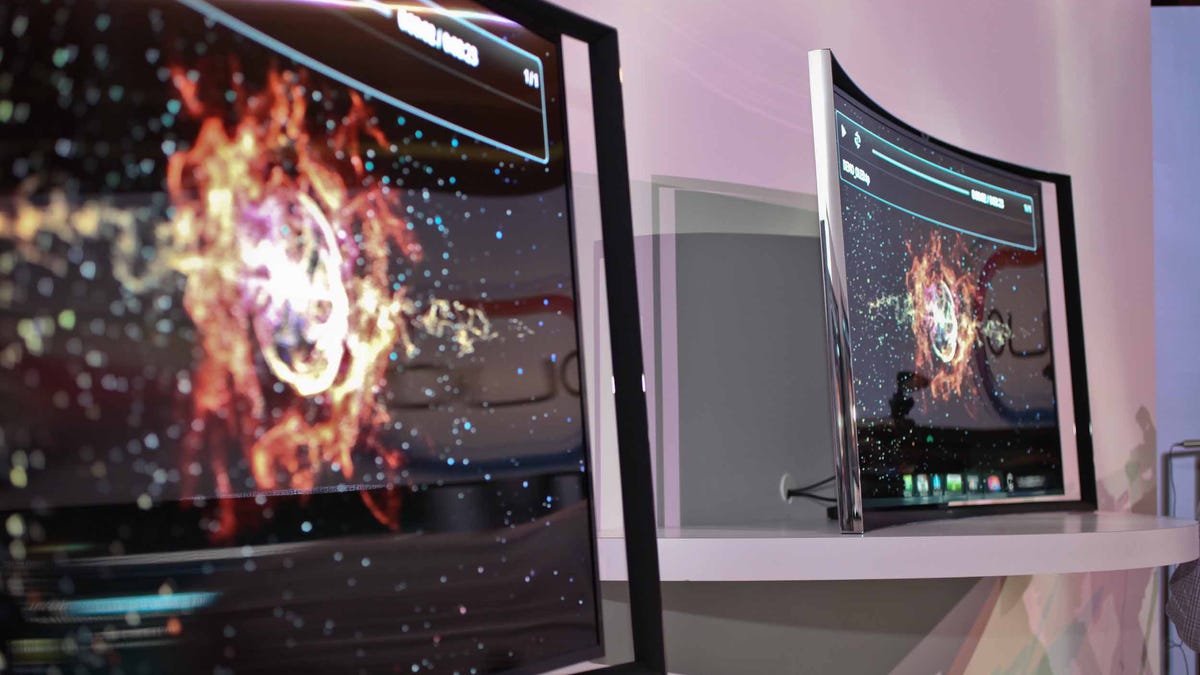Samsung: No plans to release flat-panel OLED TVs in the U.S.
Samsung executives Y.K. Kim and B.K. Kang tell CNET the company could respond quickly with flat OLEDs, if consumers demand them.

Samsung, which launched its first 55-inch OLED TV outside of Korea during an event Tuesday in New York, joins rival LG in only releasing curved versions of the new TVs. As CNET reported earlier this month, LG won't be selling a flat-panel version for the foreseeable future, and neither will Samsung, executives confirmed to CNET on Tuesday.
"Up to now, [we have] no plans," B.K. Kang, senior vice president of Samsung's consumer business division, told CNET at the company's OLED launch. "But if we need to, we can roll it out easily."
Kang and Y.K. Kim, president and CEO of Samsung Electronics North America, said Samsung has the capability to offer flat-panel OLED TVs, but it chose to introduce curved first because of the experience it gives consumers. If consumers ultimately demand flat-panel OLED TVs, Samsung will introduce them."This [curve] makes as immersive a display as you can," Kim told CNET.
Kang, meanwhile, said that Samsung has wanted to release curved TVs in the past, but older display technology wasn't "bendy" enough.
"We have been trying more than 20 years to make curved," Kang said. "OLED now has curved. We will enhance the size for next year and the next several years."
TVs with OLED, or organic light-emitting diode, screens are hitting the market around the same time as another new TV technology known as 4K, or Ultra HD. OLED offers significantly better picture quality than current TVs, plus lower energy consumption and even thinner cabinets. 4K, meanwhile, offers four times the resolution of current television displays. TV manufacturers are counting on both to help revitalize a stagnant television market.
OLED TVs have been promised for quite some time, but the chief manufacturers, LG and Samsung, have faced problems with building the displays. Error rates have been high, which has hurt yields. Such TVs are finally reaching the U.S. market, though, with both companies finally shipping products.
Samsung's new TV, priced at $8,999, costs significantly less than the OLED TV from LG, priced at $14,999. David Das, vice president at Samsung Electronics America, said during the launch that better-than-expected yields allowed Samsung's lower pricing.
Still, both companies will be working to lower the cost even further and attract more customers.
Pricing is "still high, I think from a consumer's point of view," Kim said.

